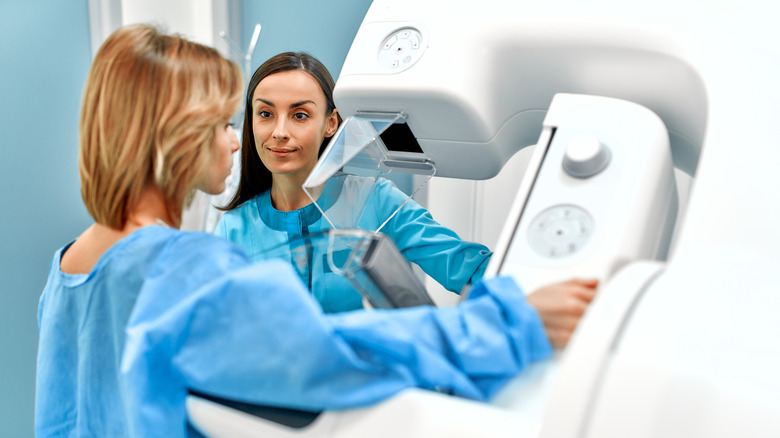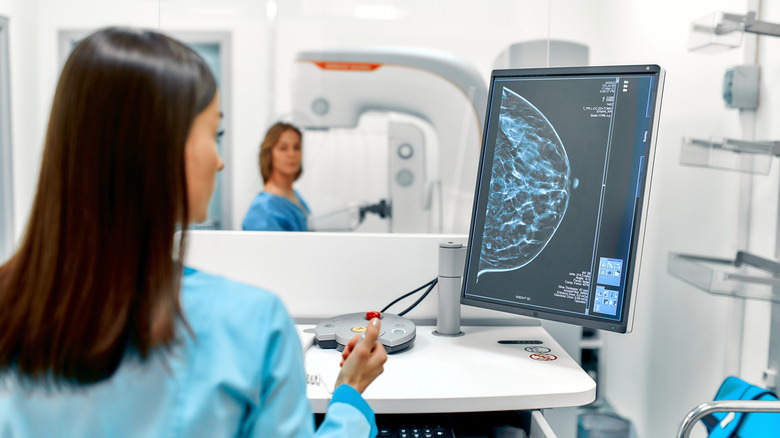
If you’re above the age of 40 (or if you have a family history of breast cancer), it’s likely that you’ve either received or have considered scheduling a mammogram. Given the fact that breast cancer is the second-most common cancer among women in the United States, per the Centers for Disease Control and Prevention, women between the ages of 40 and 54 are encouraged to schedule breast cancer screenings with mammograms once a year.
Women with family members who have been diagnosed with breast cancer at a younger age should be extra vigilant when it comes to preventative healthcare. “If you have other risk factors for breast cancer, your provider may recommend a screening mammogram or breast ultrasound,” Dr. Vivek Cherian, an internal medicine physician, told Byrdie. “If you have a mother or sister who had breast cancer at a young age, for example, you should begin screening earlier than the age the youngest relative was diagnosed.”
There are several different ways to screen for breast cancer, including a mammogram, breast ultrasound, 3-D mammography, contrast-enhanced digital mammography, or self-exam, according to Memorial Sloan Kettering Cancer Center. Though all of these choices exist, the Centers for Disease Control and Prevention states that a mammogram, or an X-ray of the breast, is the best way to find breast cancer early. Here’s what to expect when you book a breast cancer screening.
A mammogram can provide solace to some for only a few moments of discomfort

While mammograms can be uncomfortable, they are necessary in order to detect early forms of breast cancer. According to the Centers for Disease Control and Prevention, the screening itself is fairly straightforward. Those getting a mammogram will stand in front of a special X-ray machine while a technologist places each breast on a plastic plate. From above, another plastic plate will firmly press against each breast, flattening them while the X-ray is taken. These plastic plates will also shift in order to get a side view of each breast. This squeezing of the breasts can be uncomfortable for some people. In order to minimize the amount of discomfort that you feel during the screening, avoid scheduling a mammogram a week prior to getting your period or during your period. After getting the mammogram, you will need to wait to leave until the technologist confirms that the four X-rays do not need to be redone.
Typically, you will receive the results from your mammogram within a couple of weeks. Radiologists will look at the X-rays of your breasts and categorize the results based upon a system called the Breast Imaging Reporting and Data System, per the American Cancer Society. These result categories, numbered 0-6, will determine if your screening for breast cancer is negative, benign, probably benign, suspiciously abnormal, highly suggestive of malignancy, or known malignancy. Depending on the test results, you may need to schedule further tests.
Source: Read Full Article
